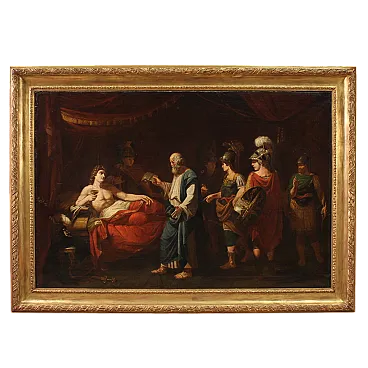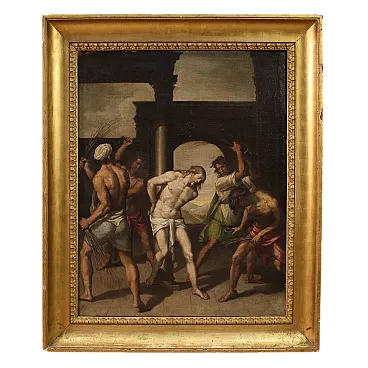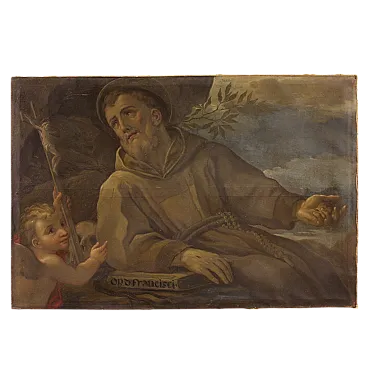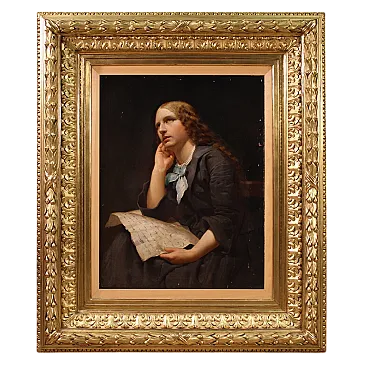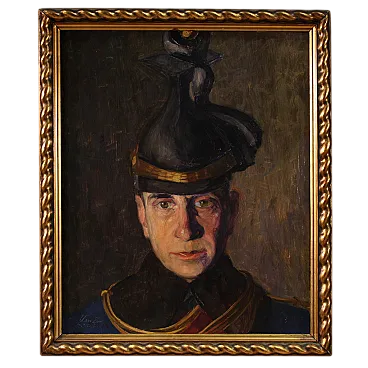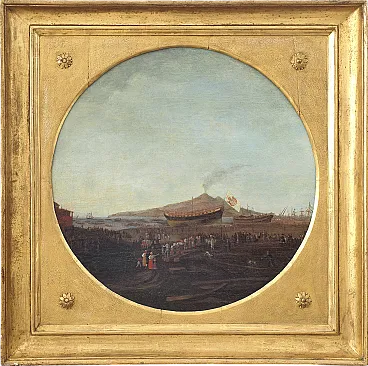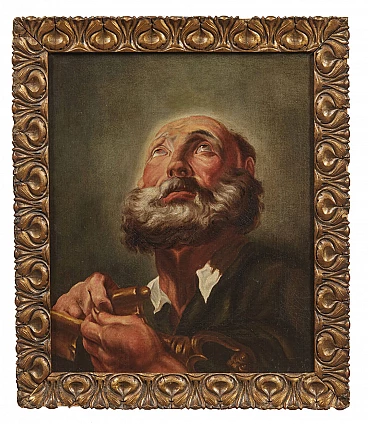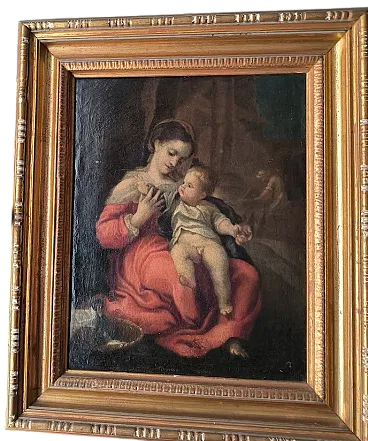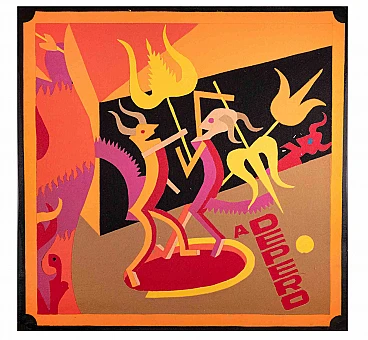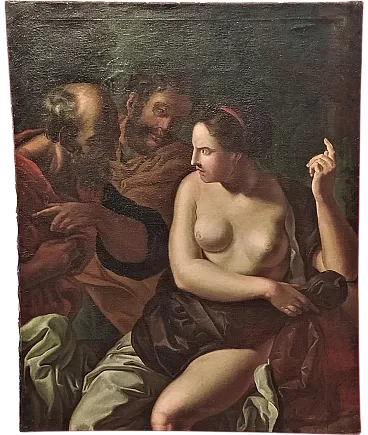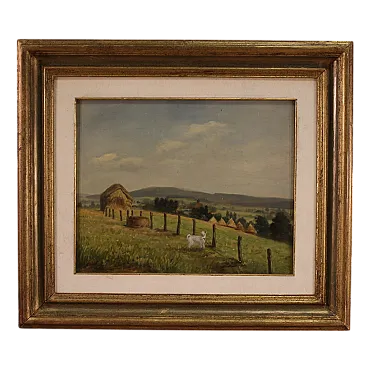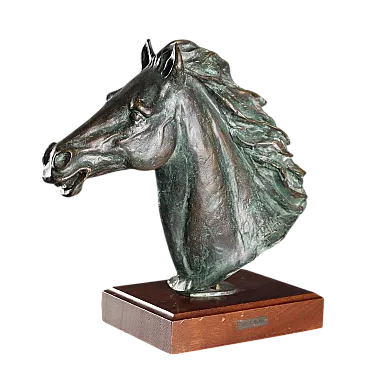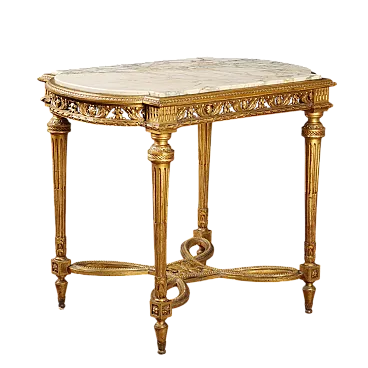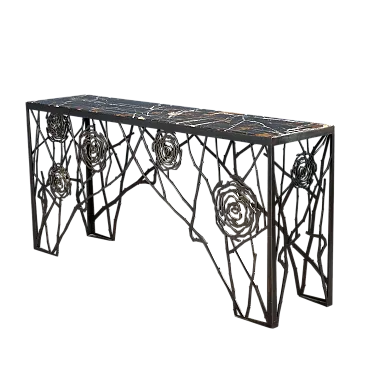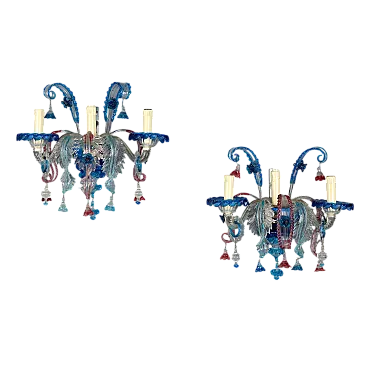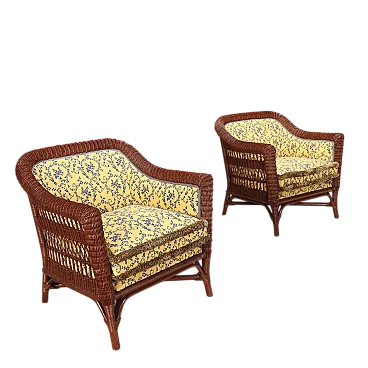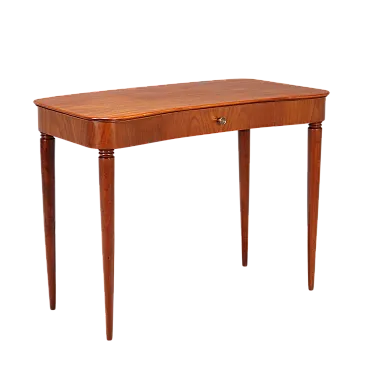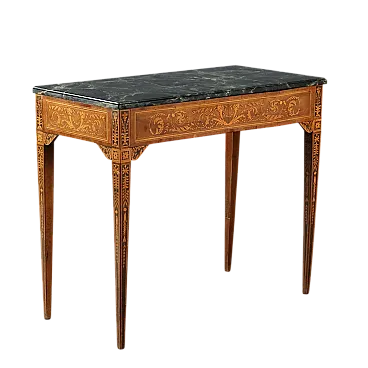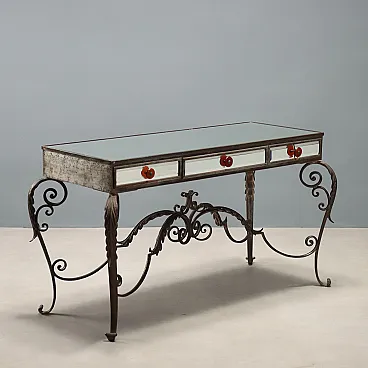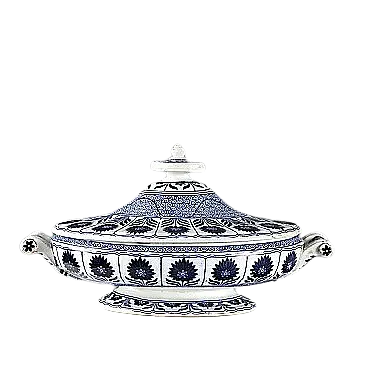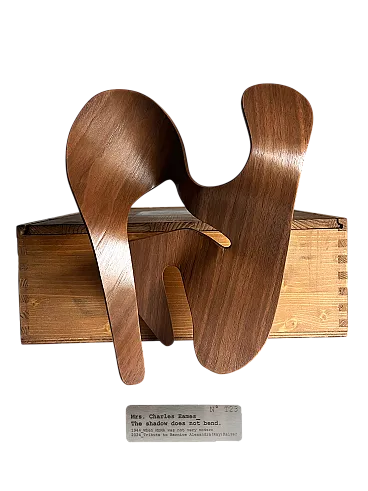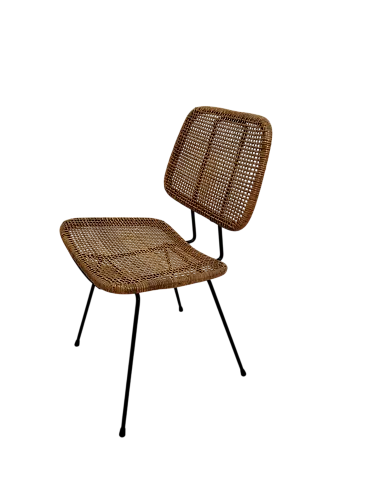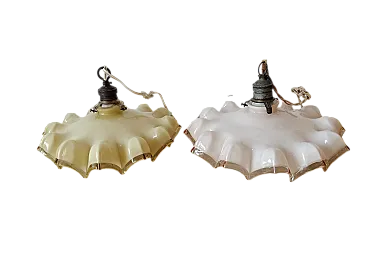Tempera on panel depicting a half-length female figure; she is wearing a red dress over a light-coloured tunic, while a green drape rests on her right shoulder. Her red hair is gathered up with a central parting and is partly covered by a snow-white headdress. The full face has an absorbed expression: the gaze is thoughtful, the eyebrows arched and the lips slightly frowning.
Presented in a frame made from parts of a larger antique frame.
The head is likely related to the composition of the Madonna di Porta Pinti, executed by Andrea del Sarto in 1522 as a fresco for a tabernacle just behind Porta Pinti in Florence, at a crossroads not far from the Gesuati church (San Giusto alle Mure).
Vasari described the painting: "a Nostra Donna a sedere con un Putto in collo et un San Giovanni fanciullo che ride, fatto con un'arte grandissima e lavorato in fresco perfettissimamente, stimato molto per la vivezza e per la bellezza sua" noting that the painter had given the Madonna the features of his wife Lucrezia: "E la testa della Nostra Donna è il Ritratto della sua moglie di naturale" (see G. Vasari, Le vite de' più eccellenti architetti, pittori, et scultori italiani, da Cimabue, insino a' tempi nostri, Florence 1550, Turin ed. 1986, vol. II, p. 713).
Although the fresco was much damaged by the early eighteenth century, it still existed in 1880 (see G. Milanesi in: G. Vasari, Le Vite de' più eccellenti pittori, scultori, e architettori, Florence 1568, edited by G. Milanesi, Florence 1880, 33, note 1). The most complete figurative account of the original tabernacle is the one given to us by Bottari (see R. Borghini, Il Riposo, preface and notes by G. S. Bottari, Florence 1730, p. 344, note 1), who alongside Baldinucci also describes the figures of the accompanying saints who probably appeared on the side walls of the tabernacle, especially as they are not seen in any copies (see F. Baldinucci, Notizie de’ Professori del Disegno da Cimabue in qua, Florence, 1728, vol. III, pag. 205). The work is therefore mentined by the most eminent sources id the XVI and XVII century.
It is widely believed that the most complete replica is the smaller-format Birmingham one, close to the original in date (Birmingham, Barber Institute, 51 x 38 cm; see J. Shearman, Andrea del Sarto, London 1965, vol. II, p. 248, at n. 59, copies (i), panel 90b).

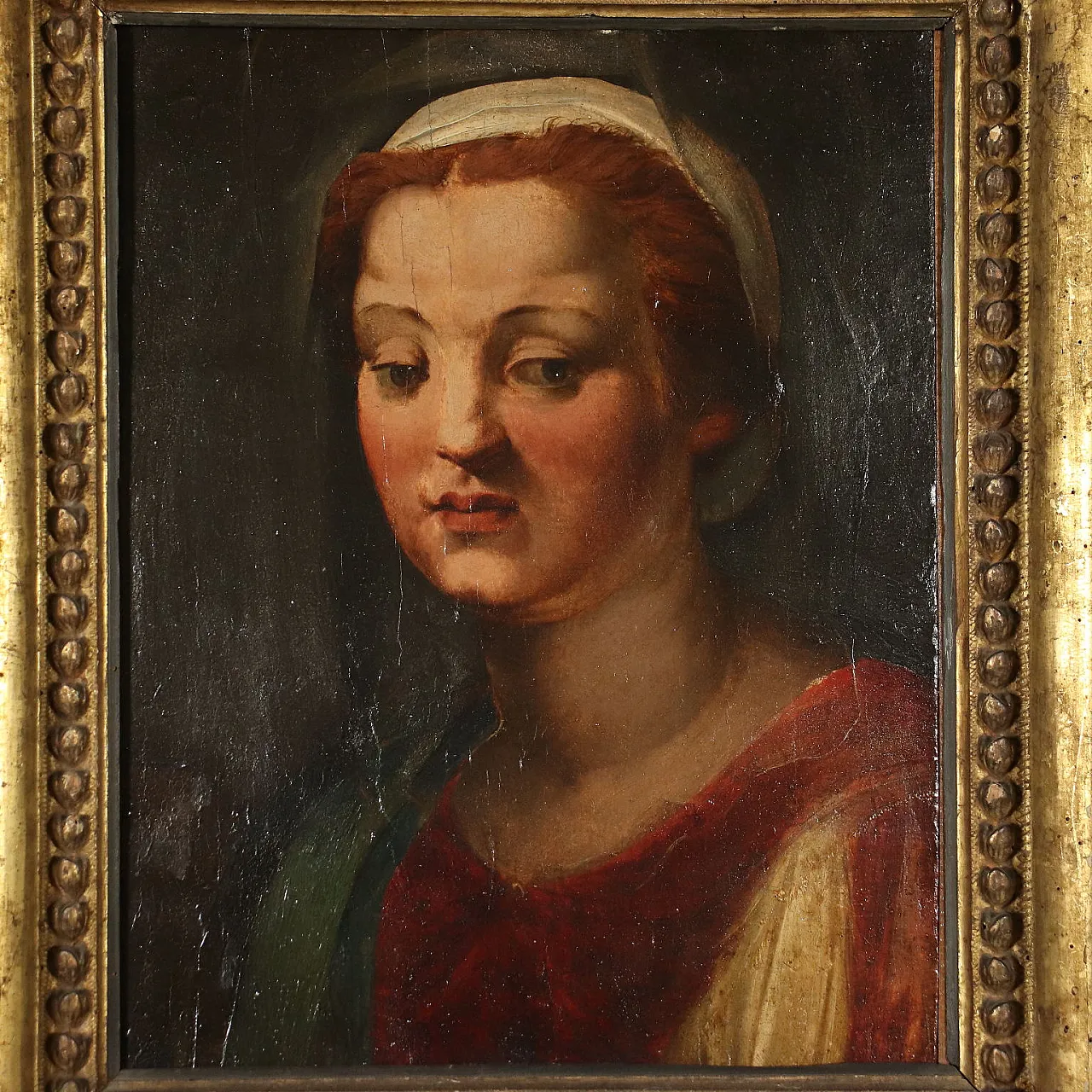
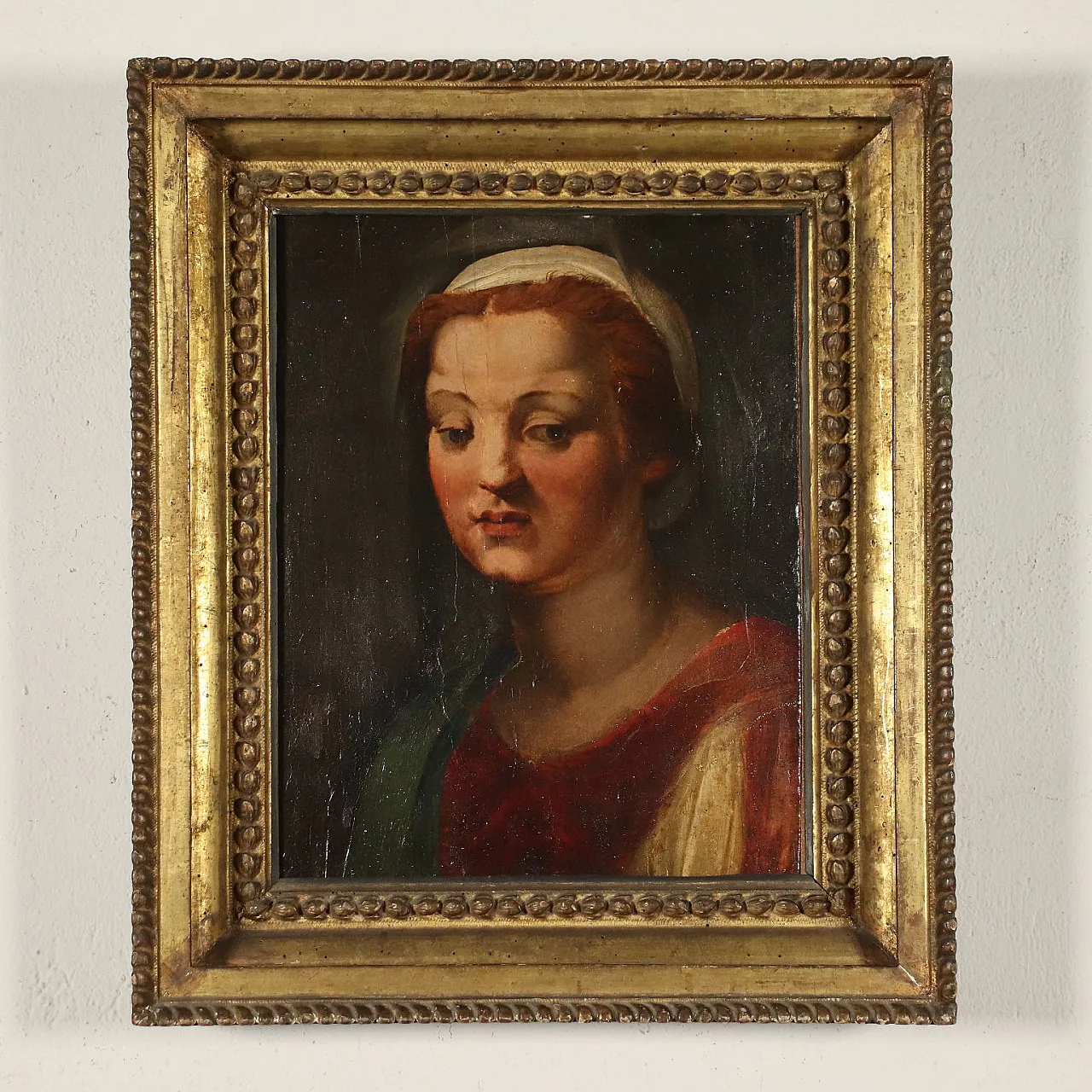
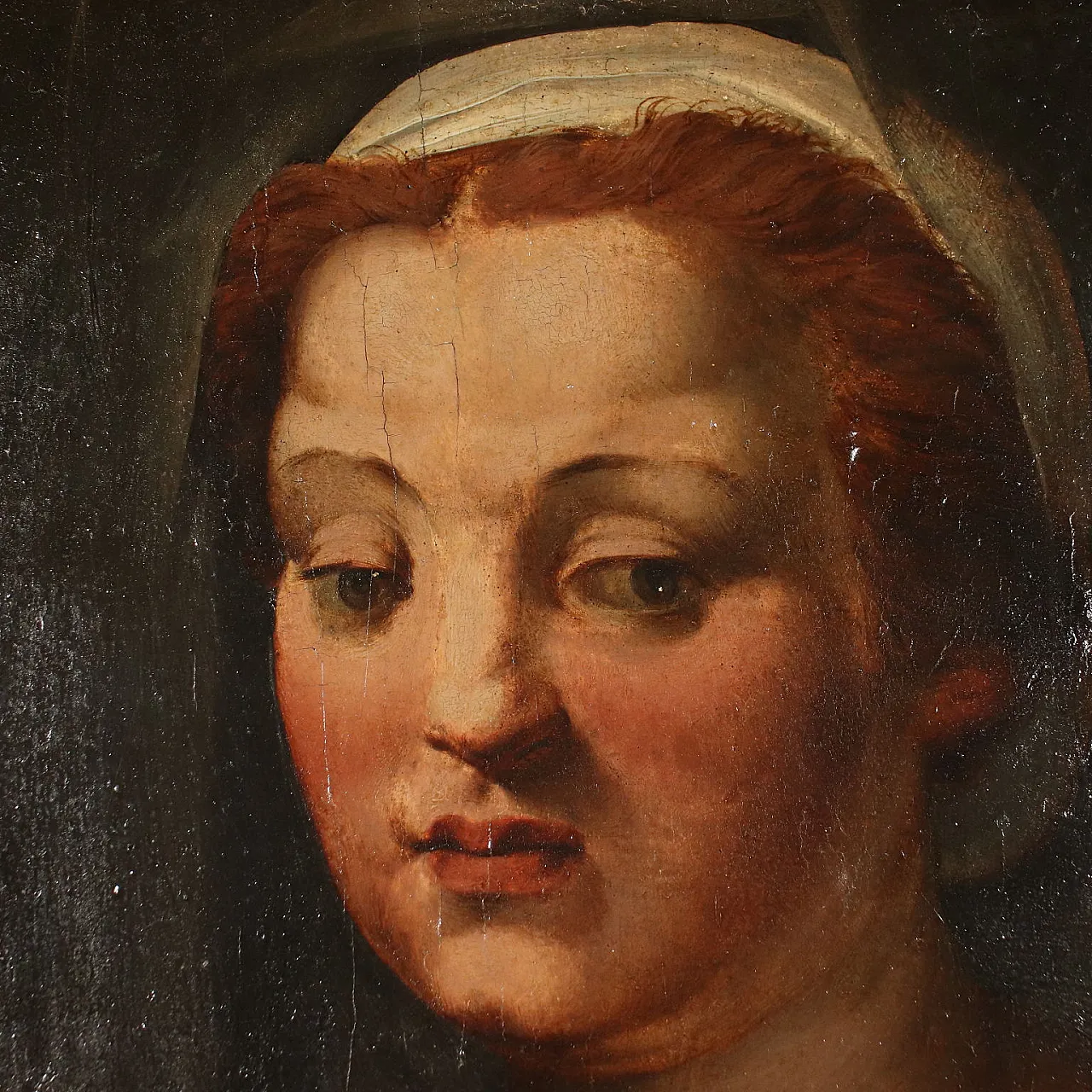
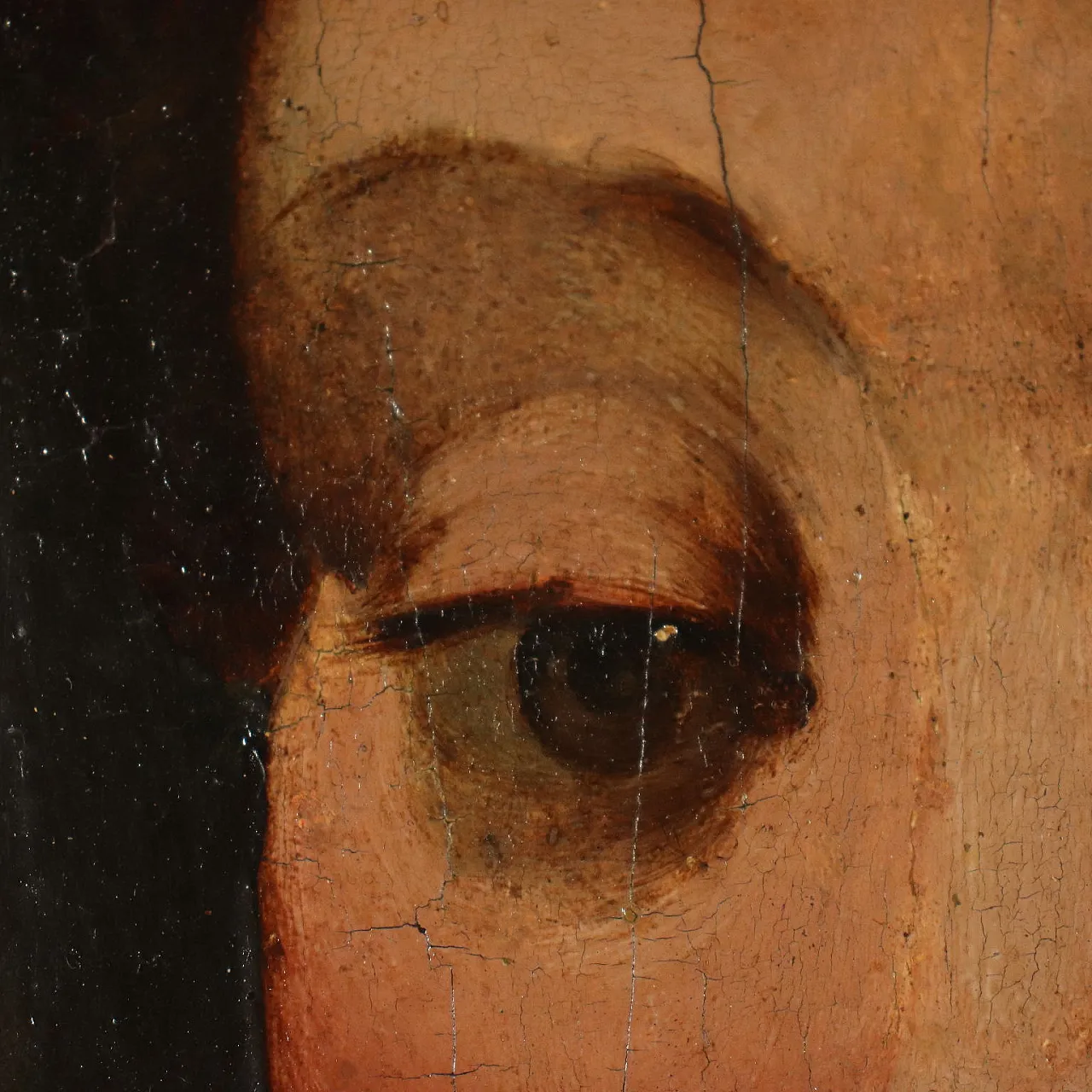
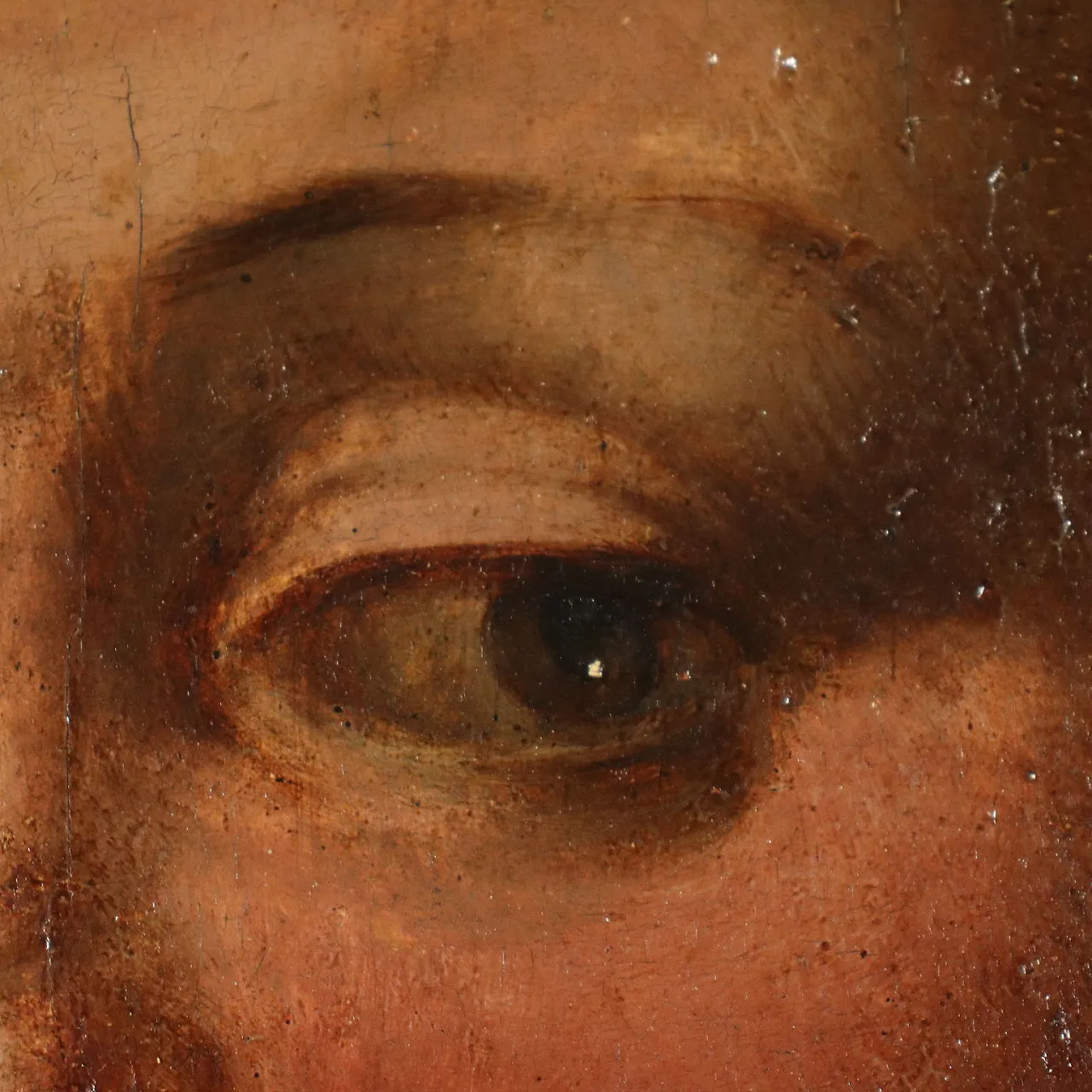
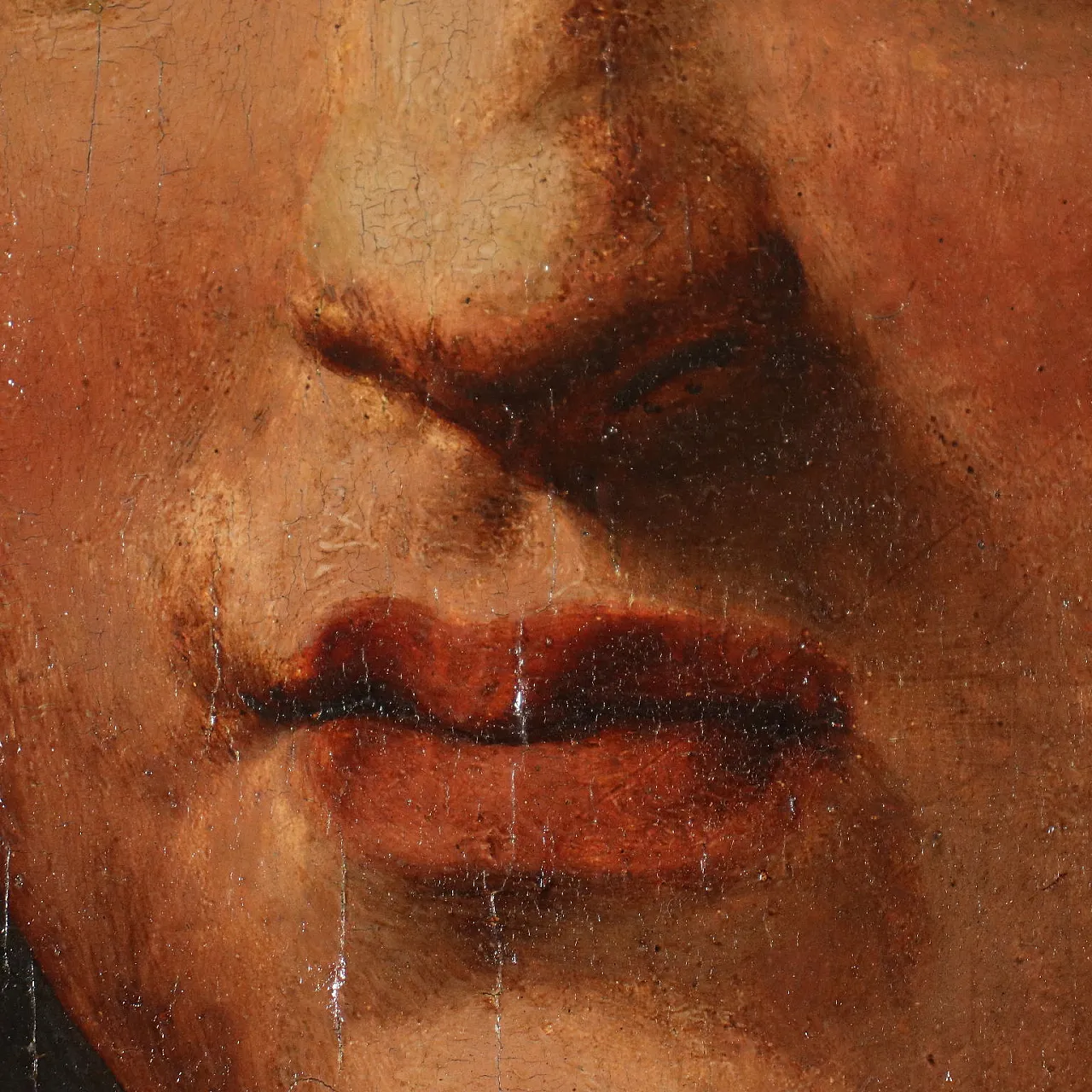
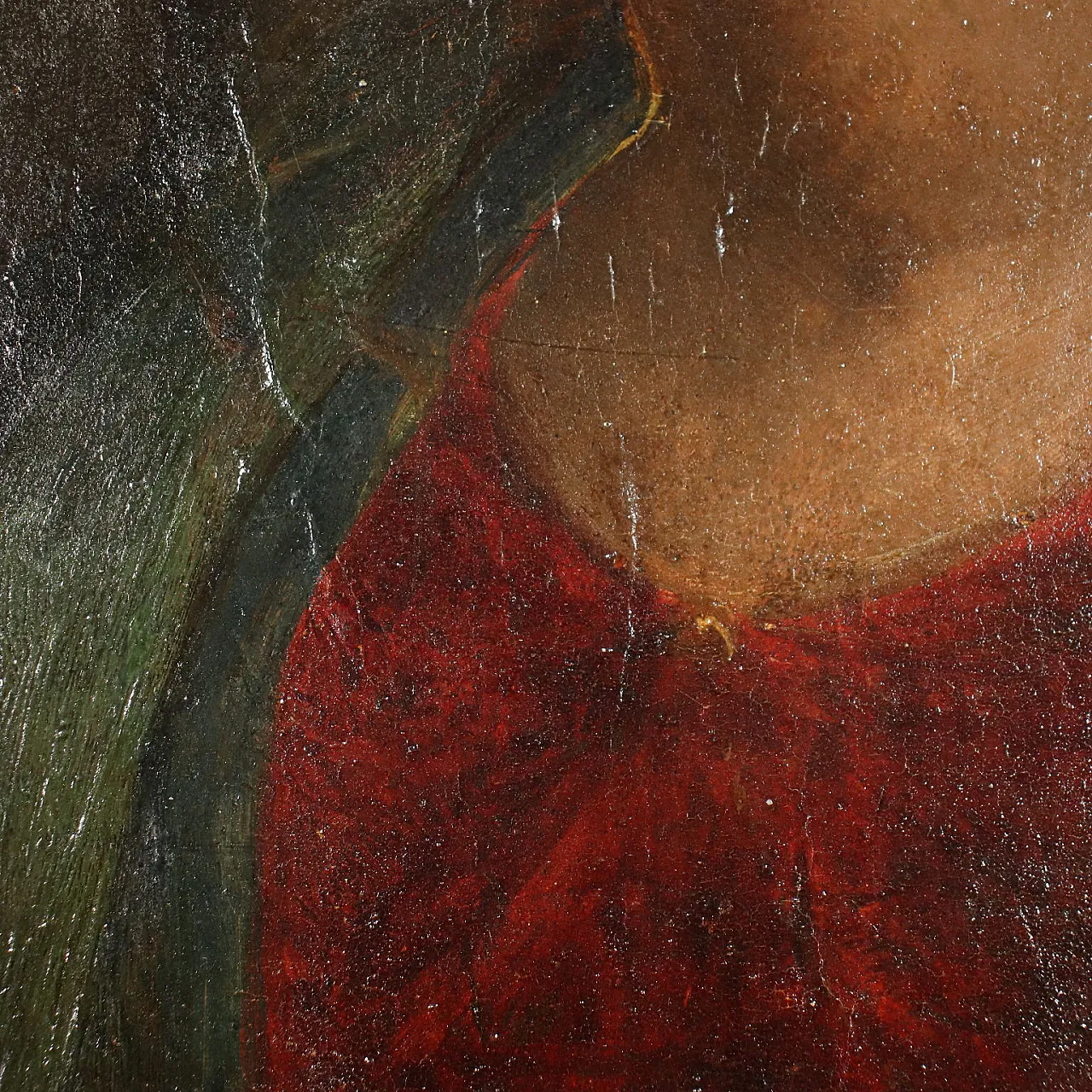
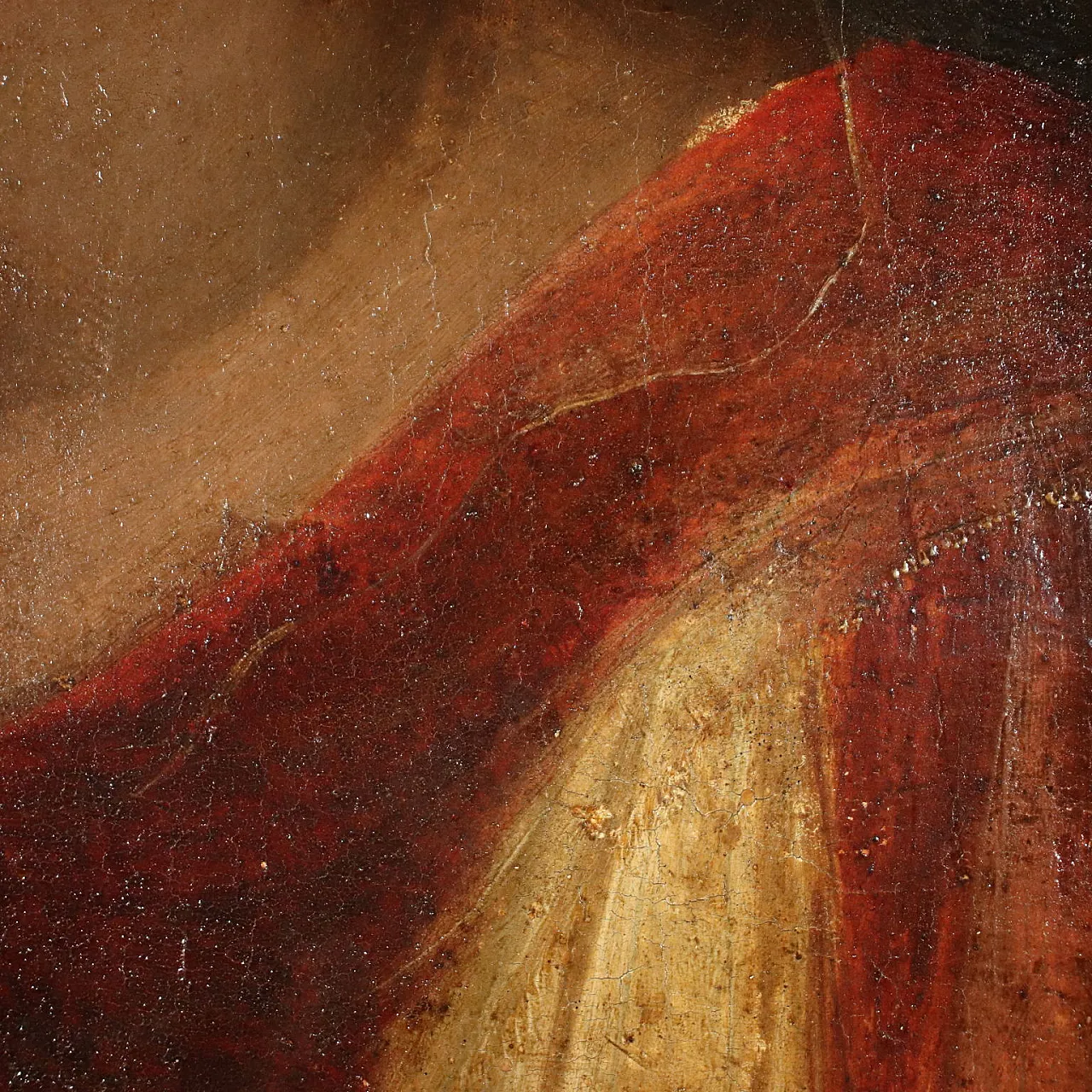
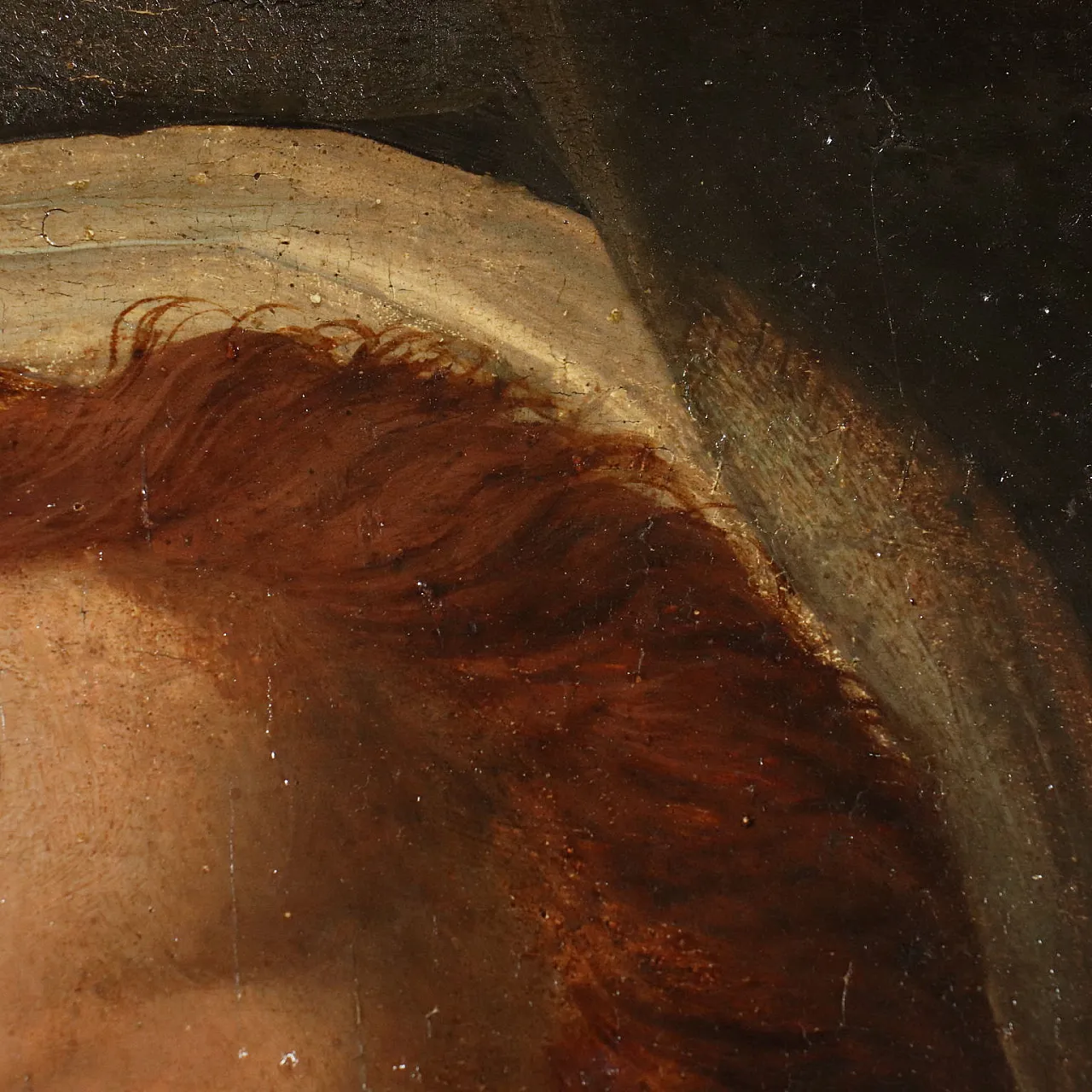
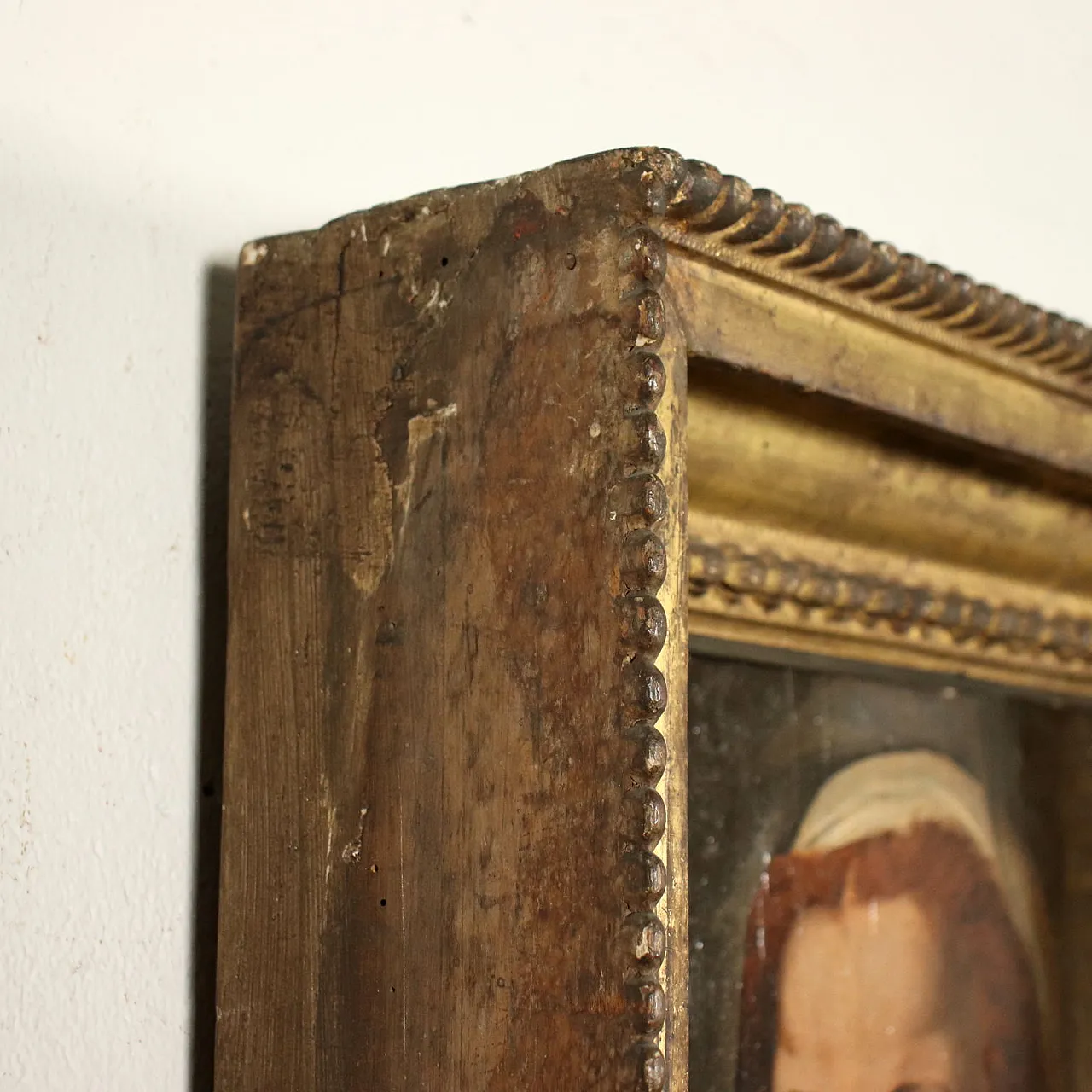
 PLATINUM Seller in Milano, Italy
PLATINUM Seller in Milano, Italy






.png)





